Starting with keyword research?
One of the most valuable skills is learning how to find and analyze search volume data for your target keywords.
Knowing how many people search for a term—and understanding all the related metrics like CPC, competition, and trends—helps you choose keywords that align with user interest and strategic goals.
In this post, we’ll answer how to see how many searches a keyword gets using tools like Keywords Everywhere, and we will also share methods to enhance your keyword insights.
Let’s dive in!
What is keyword search volume?
Keyword search volume is a metric that shows the number of times a specific keyword is searched online.
It gives you an estimate of how many people are interested in information related to that keyword.
Typically, search volume for a keyword is measured on a monthly basis.
For example, if the keyword “yoga mat” has a search volume of 398,000 monthly searches on Google, that means around 400,000 people are actively searching for yoga mats each month.
How to see how many searches a keyword gets?
Understanding the search volume for keywords is important for content strategy and SEO because it shows how popular some terms are among searchers.
Knowing how many searches a keyword gets helps you prioritize high-demand topics, reach your target audience, and make more data-driven decisions.
With the Keywords Everywhere tool, you can access monthly search volume and other key metrics in seconds. Here’s how:
1. Search Volume Measurement by Search Result
When the Keywords Everywhere extension is active, additional keyword data appears beneath Google search results.
This includes backlink data, domain authority, and a chart that shows search volume for specific URLs and domains.
For example, if you search for “how to make a website,” the top result may be a blog article from Wix.
Hover over the “search traffic” metric to see estimated visits—say, 97,000 per month for that page, with over 2 million monthly visits for the entire domain.
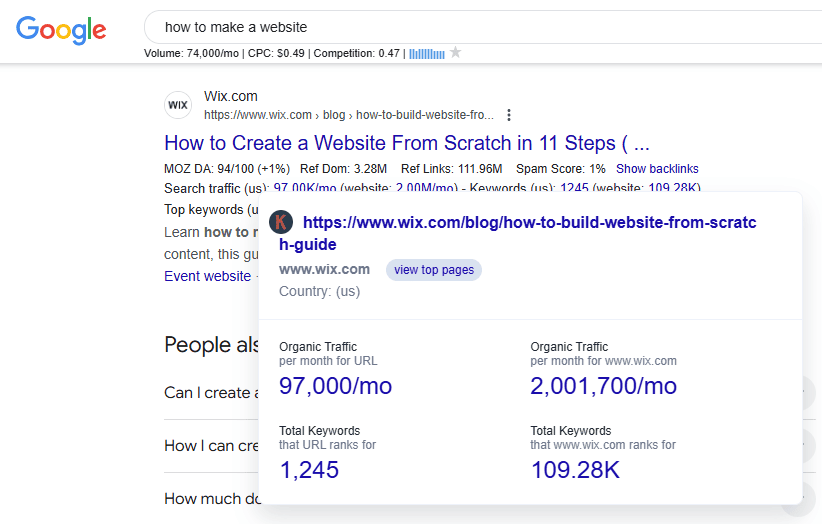
Click on the traffic figure (e.g., 97,000) to get more details. This opens a page with a list of related keywords along with metrics for each:
- Estimated Traffic: Monthly visits to the page for the keyword.
- SERP Position: The page’s ranking on Google for that specific keyword.
- Volume: The monthly global search volume.
- CPC: Average CPC (cost per click).
- Competition: Ranking difficulty on a 0-1 scale.
- Trend: Search volume trends over time.
- Trending %: How much of the keyword’s popularity is currently rising?
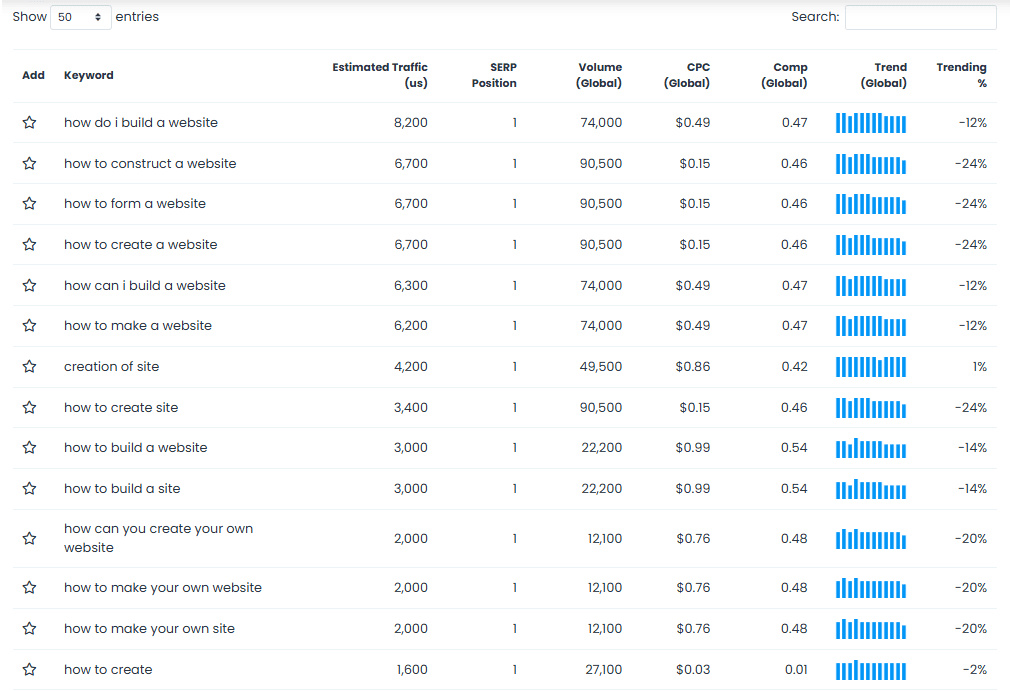
For instance, “How do I build a website” might have 74,000 monthly searches—making it a keyword worth considering.
You can also identify other high-volume keywords like “how to form a website” and export this data as a PDF or CSV file.
2. Search Volume Measurement by Widget
Keywords Everywhere gives you a widget on the side of Google search results with related keywords and trend data. You can see recent trends over days, weeks, or months for a keyword.
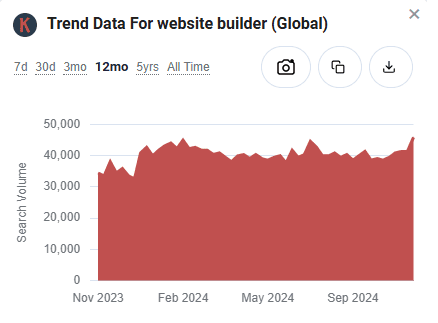
Clicking on this widget takes you to Google Trends, where Keywords Everywhere overlays a graph to show exact search volumes across time.
For example, if you search “website builder” on Google, you’ll find that this keyword is peaking in February and March. This suggests a high monthly search volume during those months.

3. Search Volume Measurement by Bulk Keywords Data Tool
Keywords Everywhere also allows for bulk keyword analysis.
Under our tool’s menu, choose the “Bulk Upload Keywords,” where you can enter up to 5,000 keywords. This feature returns search volume, CPC, competition, and trending data for each keyword.
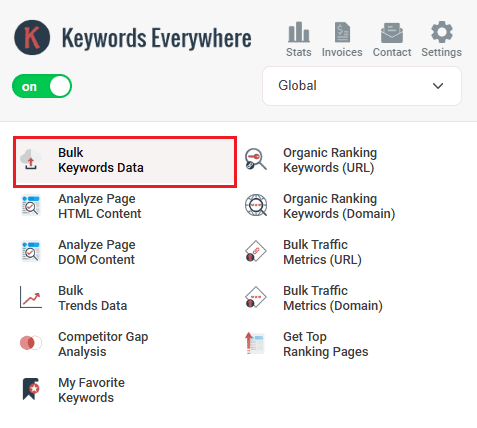
For instance, entering a list of ten keywords related to “website builder” will show you the monthly search volume for each and all other important metrics.
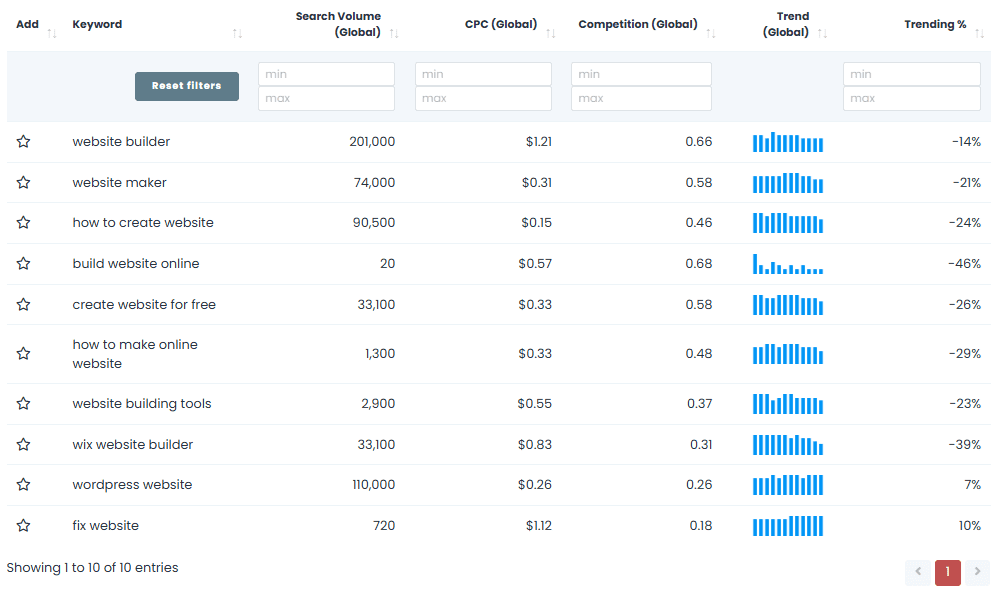
You can copy or download this list to analyze multiple keywords at once. Our bulk tool is helpful for evaluating keyword lists you already have or exploring new keyword ideas.
How to find keyword search volume on YouTube?
With the Keywords Everywhere extension, you can check the YouTube keyword search volume in seconds.
Simply go to YouTube and type your keyword in the search bar. In our example, we’re taking “weight loss.”
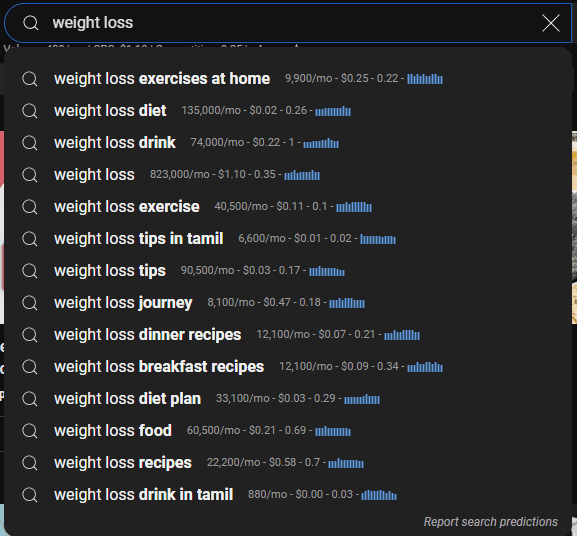
Our tool will show you the monthly search volume, CPC, competition, and 12-month trend data for the search term, as well as all related keywords.
Since YouTube does not release its own search volume data, this information is based on Google Keyword Planner data.
How can I check Amazon keyword search volume?
Amazon keywords are the exact words or phrases customers enter when they search for a product. It acts as the link between what shoppers want and your product listing.
Choosing the right keywords is essential because they directly impact how visible your product is in search results.
With the right set of keywords, your product will appear higher in relevant searches, while the wrong ones can cause it to get lost among numerous listings, which will lower visibility and potential sales.
Using tools like Keywords Everywhere helps you find Amazon keyword search volume in seconds.
Once you’ve installed the browser addon and activated your API Key, go to Amazon and type in any product or keyword.
You’ll immediately see keyword volume, CPC, and competition data right below the search box.

The best part? Keywords Everywhere allows you to check search volume directly on Amazon as you browse products, saving you both time and effort—an advantage many other keyword tools don’t offer.
Why is keyword search volume important?
If your keyword strategy is already pretty effective, you may be asking yourself if you really need to bother with analyzing keyword search volume.
But there are some very good reasons for you to pay attention to it:
- It helps you gauge user interest and estimate potential traffic. High search volume can help you get more visitors.
- Keyword search volume can help guide your content strategy by uncovering popular and emerging topics that your audience is interested in.
- For PPC campaigns, higher volume keywords can cost more per click, but the traffic and business they bring in can justify the investment.
- Lower volume keywords may not get as much traffic, but if they’re highly relevant to your niche, the users who do search for those queries may be ideal customers for you.
- Monitoring keyword search volume over time can help you stay on top of trends and shifts in consumer preferences, allowing you to adjust your strategy to maintain or increase traffic.
- A strong mix of high-volume and low-volume keywords broadens your site’s visibility across a range of searches and audiences.
What is a good search volume for a keyword?
If you’re a beginner, a good keyword search volume to target is between 10-100. However, it depends on your goals, niche, and industry.
There’s more to keyword research than just search volume.
For example, some keywords are better at generating profits than others, and often, you can gauge this through a keyword’s average CPC or “Cost Per Click” value.
Let me explain.
The keyword “buy laptop mouse” has a search volume of only 210 in the United States. According to Keywords Everywhere, it also has a CPC of $0.11.

This means advertisers are willing to pay $0.11 for each click generated through that keyword.
Now compare this to the keyword “laptop mouse,” which has a much higher search volume of 18,100.

Notice anything strange?
Despite the massive search volume, its CPC is lower than that of a “buy laptop mouse.”
This difference is because the keyword “buy” indicates a higher purchase intent, so targeting it could lead to more sales, which might be your website’s goal.
Additionally, a well-crafted article can rank for multiple keywords at once.
This often happens if a single piece of content covers several related subtopics.
If you optimize for a range of keywords, even with search volumes of 10-100 each, the combined search volume from all those keywords can be substantial!
What is a high keyword volume?
Keywords that are searched most frequently are considered high search volume. Google’s algorithm calculates a keyword’s popularity based on how often users search for it.
High-volume keywords are typically very competitive and broadly targeted.
While ranking for these keywords can drive a lot of traffic to your website, it might not be worth the effort since they’re highly competitive and may demand substantial time and money to rank.
When someone searches for a high-volume keyword, the search engine includes relevant websites in the person’s search engine results pages (SERPs).
So, selecting the best keywords is essential for an effective content strategy.
What to do with low search volume keywords?
Low-volume keywords are those terms that are not searched as frequently. It’s also important to know that Google Ads may not show your PPC or CPC ad if it contains too many low-volume keywords.
However, there are some advantages of targeting low-volume keywords.
You can reach an audience that is highly relevant because these users are specifically searching for your content.
By focusing on buying-intent keywords, you can boost conversion rates rather than increase traffic. You may also get a head start in an emerging or overlooked niche.
Google does often limit traffic to low-volume keywords because not enough people are searching for them.
But targeting these searches could be valuable if users are interested in specific content or products that are hard to find in mainstream channels.
While low-volume keywords might not greatly boost traffic, they can improve click-through rates since your audience is highly targeted and actively searching for what you offer.
One big advantage of low-volume keywords is the reduced competition compared to high-volume ones. High-volume keywords can overwhelm your website with broad search results, but low-volume keywords let you stand out more easily.
If user intent becomes strong enough, low-volume keywords can increase your sales.
So, low-volume keywords could be an excellent starting point if you’re a smaller business that is more focused on reaching a specific audience than on high traffic.
Staying in the range of medium to long-tail keywords can help boost traffic and improve conversion rates so don’t overlook the potential of low-volume keywords as well.
Wrapping Up
Knowing how many searches a keyword gets is important for building a successful SEO and content strategy.
When you find keyword search volume, you gain insight into audience interest, prioritize topics, and set realistic goals for content performance.
High-volume keywords can help you drive substantial traffic, but they often come with high competition.
On the other hand, low-volume keywords may bring less traffic, but they can deliver highly targeted visitors. This improves your click-through rates and conversions.
Tools like Keywords Everywhere streamline the whole process of analyzing search volume and related metrics.
Whether you’re looking up keyword data on Google, YouTube, or Amazon, our tool gives you essential insights like CPC, competition, and trends at a glance.


